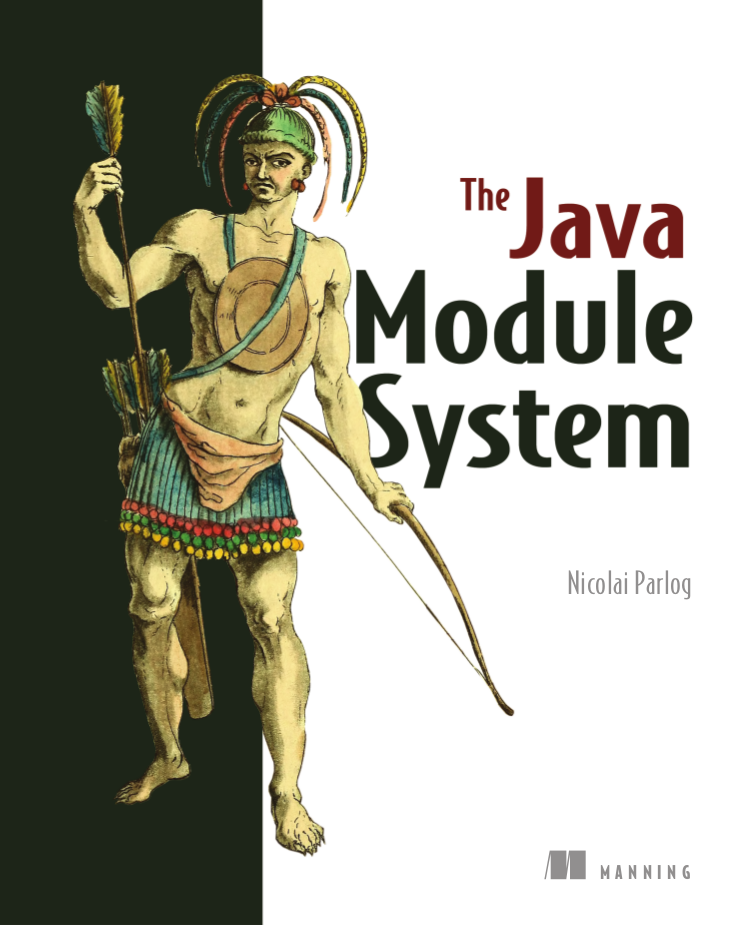String property = "last_name";
String value = "Doe";
// concatenation
String query =
"SELECT * FROM Person p WHERE p."
+ property + " = '" + value + "'";
// formatting
String query =
"SELECT * FROM Person p WHERE p.%s = '%s'"
.formatted(property, value);Java Next!
From Amber to Loom, from Panama to Valhalla
Lots to talk about!
| Project Amber |
| Project Panama |
| Project Valhalla |
| Project Loom |
Slides at slides.nipafx.dev.
Project Amber
Smaller, productivity-oriented Java language features
Profile:
project / wiki / mailing list
launched March 2017
led by Brian Goetz
Motivation
Some downsides of Java:
can be cumbersome
tends to require boilerplate
situational lack of expressiveness
Amber continuously improves that situation.
Delivered
Pattern Matching
Amber’s main thrust is pattern matching:
improved switch
records
sealed types
pattern matching
Inside Java Newscast #29
String composition
Composing strings in Java is cumbersome:
Comes with free SQL injection! 😳
String interpolation
Why not?
// (fictional syntax!)
String query =
"SELECT * FROM Person p "
+ "WHERE p.\{property} = '\{value}'";Also comes with free SQL injection! 😳
String interpolation
SQL injections aren’t the only concern.
These also need validation and sanitization:
HTML/XML
JSON
YAML
…
All follow format-specific rules.
String templating
Enter String Templates (JEP 430):
String query = STR."""
SELECT * FROM Person p
WHERE p.\{property} = '\{value}'
""";Template expression ingredients:
template with embedded expressions
~>StringTemplatetemplate processor (e.g.
STR):
transformsStringTemplateintoString*
Template procesor STR
String form = STR."""
Desc Unit Qty Amount
\{desc} $\{price} \{qty} $\{price * qty}
Subtotal $\{price * qty}
Tax $\{price * qty * tax}
Total $\{price * qty * (1.0 + tax)}
""";Desc Unit Qty Amount
hammer $7.88 3 $23.64
Subtotal $23.64
Tax $3.546
Total $27.186Template processor FMT
String form = FMT."""
Desc Unit Qty Amount
%-10s\{desc} $%5.2f\{price} %5d\{qty} $%5.2f\{price * qty}
Subtotal $%5.2f\{price * qty}
Tax $%5.2f\{price * qty * tax}
Total $%5.2f\{price * qty * (1.0 + tax)}
""";Desc Unit Qty Amount
hammer $ 7.88 3 $23.64
Subtotal $23.64
Tax $ 3.55
Total $27.19Why strings?
Often, strings are just exchange format, e.g.:
start with:
String+ valuesvalidate / sanitize (i.e. parse)
dumb down to:
String🤔parse to:
JSONObject,Statement, …
Why the detour?
Custom templating
STR is a singleton instance of
a Processor implementation:
public interface Processor<RESULT, EX> {
RESULT process(StringTemplate s) throws EX;
}RESULT can be of any type!
Custom templating
// prevents SQL injections
Statement query = SQL."""
SELECT * FROM Person p
WHERE p.\{property} = '\{value}'
""";
// validates & escapes JSON
JSONObject doc = JSON."""
{
"name": "\{name}",
"year": "\{bday.getYear()}"
}
""";Template strings
Preview feature in Java 21! 🙌🏾
Amber endeavors
Amber endeavors
Other endeavors and conversations:
simplified main (JEP 445)
multi-file source launcher (JEP draft)
relaxed
this()/super()(JEP 447)deconstruction assignment (announcement)
withexpressions (design document)concise method bodies (JEP draft)
serialization revamp (design notes)
Project Amber
makes Java more expressive
reduces amount of code
makes us more productive
Timeline
Timeline
My personal (!) guesses (!!):
- 2024
relaxed
this()/super()primitive types in patterns
more deconstruction
multi-file source launcher
Deeper Dives
🎥 Java Language Futures: All Aboard Project Amber
(Nov 2017)🎥 Java Language Futures: Late 2021 Edition (Sep 2021)
🎥 Pattern Matching in Java (17) (Sep 2021)
🎥 State of Pattern Matching with Brian Goetz (Feb 2022)
Project Panama
Interconnecting JVM and native code
Profile:
launched July 2014
led by Maurizio Cimadamore
Subprojects
vector API
foreign memory API
foreign function API
Vectorization
Given two float arrays a and b,
compute c = - (a² + b²):
// a, b, c have same length
void compute(float[] a, float[] b, float[] c) {
for (int i = 0; i < a.length; i++) {
c[i] = (a[i] * a[i] + b[i] * b[i]) * -1.0f;
}
}Auto-vectorization
Vectorization - modern CPUs:
have multi-word registers (e.g. 512 bit)
can store several numbers (e.g. 16
floats)can execute several computations at once
⇝ single instruction, multiple data (SIMD)
Just-in-time compiler tries to vectorize loops.
⇝ Auto-vectorization
Works but isn’t reliable.
Vector API
static final VectorSpecies<Float> VS =
FloatVector.SPECIES_PREFERRED;
// a, b, c length is multiple of vector length
void compute(float[] a, float[] b, float[] c) {
int upperBound = VS.loopBound(a.length);
for (i = 0; i < upperBound; i += VS.length()) {
var va = FloatVector.fromArray(VS, a, i);
var vb = FloatVector.fromArray(VS, b, i);
var vc = va.mul(va)
.add(vb.mul(vb))
.neg();
vc.intoArray(c, i);
}
}Vector API
Properties:
clear and concise API (given the requirements)
platform agnostic
reliable run-time compilation and performance
graceful degradation
Foreign memory
Storing data off-heap is tough:
ByteBufferis limited (2GB) and inefficientUnsafeis… unsafe and not supported
Foreign-memory API
Safe and performant foreign-memory API:
control (de)allocation:
Arena,MemorySegment,SegmentAllocatorto access/manipulate:
MemoryLayout,VarHandle
Foreign functions
JNI isn’t ideal:
involves several tedious artifacts (header file, impl, …)
can only interoperate with languages that align
with OS/architecture the JVM was built fordoesn’t reconcile Java/C type systems
Foreign-function API
Streamlined tooling/API for foreign functions
based on method handles:
jextract: generates method handles from header fileclasses to call foreign functions
Linker,FunctionDescriptor,SymbolLookup
Project Panama
connects Java with the native world
offers safe, detailed, and performant APIs
Timeline
Timeline
My personal (!) guess (!!):
foreign APIs finalize in 2024
Deeper Dives
Vector API:
🎥 Fast Java Code with the Vector API (Mar 2023)
🎥 The Vector API in JDK 17 (Sep 2021)
📝 FizzBuzz – SIMD Style! (Mar 2021)
Deeper Dives
Foreign APIs:
📝 design documents
🎥 Panama Update with Maurizio Cimadamore (Jul 2019)
🎥 ByteBuffers are dead, long live ByteBuffers! (Feb 2020)
🎥 The State of Project Panama with Maurizio Cimadamore (Jun 2021)
Project Valhalla
Advanced Java VM and Language feature candidates
Profile:
launched July 2014
led by Brian Goetz and John Rose
Motivation
Java has a split type system:
primitives
classes
We can only create classes, but:
have identity
have references
Identity
All classes come with identity:
extra memory for header
mutability
locking, synchronization, etc.
But not all custom types need that!
References
All class instances come as references:
memory access indirection
nullability
But not all custom types need that!
Project Valhalla
Valhalla’s goals is to unify the type system:
value types (disavow identity)
null-restriction + implicit constructors
(disavow identity + references)universal generics (
ArrayList<int>)specialized generics (backed by
int[])
Value types
value class RationalNumber {
private long nominator;
private long denominator;
// constructor, etc.
}Codes (almost) like a class - exceptions:
class and fields are implcitly final
superclasses are limited
Value type behavior
No identity:
some runtime operations throw exceptions
"identity" check
==compares by statenullis default value
Benefits:
guaranteed immutability
more expressiveness
more optimizations
Migration to value types
The JDK (as well as other libraries) has many value-based classes, such as
OptionalandLocalDateTime. […] We plan to migrate many value-based classes in the JDK to value classes.
Getting rid of references
In general, value types have references:
allow
nullprevent flattening
How do we get rid of them?
Null-restriction
No references = no null!
⇝ Restrict variables to non-null values:
// number can't be null
ComplexNumber! number = // ...🤯🤯🤯
Null-restriction
A variable with a null-restricted type prevents attempts to set the variable to null. Details of this behavior are described in the referenced JEP.
Let’s follow that reference!

Null-restriction
JEP 401 (continued):
The details of general-purpose null-restricted types are still under development. The most relevant feature for this JEP is that the type of a variable or method return may use a ! suffix to indicate that it does not store null. This is enforced with runtime checks.
stuffing_brain_back_into_head.gif
Null-restriction
Variable can’t be null:
ComplexNumber! number = // ...But can ComplexNumber cope?
Default instances
The type needs a default instance:
implicit constructor
without code
Implicit constructor
value class ComplexNumber {
private double real;
private double imaginary;
// implicitly sets all fields to default values
public implicit ComplexNumber();
public ComplexNumber(double r, double i) {
// ...
}
// etc.
}No references
The just-in-time compiler can
inline/flatten variables …
of a value type
with implicit constructor
that are null-restricted
Performance comparable to today’s primitives! 🚀
Emergent performance
Don’t create a type in order to get performance.
Instead:
"Is the type value-ish?" ⇝ value type
"Is all-fields-default usable?" ⇝ implicit constructor
"Is no
nullneeded?" ⇝ restrict nullness
Performance emerges from domain decisions!
Universal generics
When everybody creates their own value classes,
boxing becomes omni-present and very painful!
Universal generics allow value classes
as type parameters:
List<long> ids = new ArrayList<>();
List<RationalNumber> numbers = new ArrayList<>();Specialized generics
Healing the rift in the type system is great!
But if ArrayList<int> is backed by Object[],
it will still be avoided in many cases.
Specialized generics will fix that:
Generics over primitives will avoid references!
Project Valhalla
Value types, implicit constructors, null-restriction
plus universal and specialized generics:
fewer trade-offs between
design and performanceno more manual specializations
better performance
can express design more clearly
more robust APIs
Makes Java more expressive and performant.
Timeline
🤷🏾♂️
At most one more iteration.
Deeper Dives
JEP draft: Value Objects
JEP 401: Flattened Heap Layouts for Value Objects
JEP draft 🥷🏾: Null-restricted Types (?)
JEP 402: Enhanced Primitive Boxing
JEP draft: Universal Generics
Deeper Dives
📝 State of Valhalla
🎥 The State of Project Valhalla with Brian Goetz (Aug 2021)
🎥 Valhalla Update with Brian Goetz (Jul 2019)
Ad break
There’s much more going on!
APIs
Continuous improvements
Continuous improvements
Performance:
auto-generated CDS ⑲ (JDK-8261455)
dynamic CDS archives ⑬ (JEP 350)
default CDS archives ⑫ (JEP 341)
generational ZGC ㉑ (JEP 439)
Continuous GC and performance improvements.
Continuous improvements
Security:
key encapsulation mechanism API ㉑ (JEP 452)
context-specific deserialization filters ⑰ (JEP 415)
Edwards-Curve Digital Signature Algorithm ⑮ (JEP 339)
ongoing enhancements (Sean Mullan’s blog)
Cleaning house
Cleaning house
Migrations
To ease migrations:
stick to supported APIs
stick to standardized behavior
stick to well-maintained projects
keep dependencies and tools up to date
stay ahead of removals (
jdeprscan)build on each release (including EA)
Then you, too, can enjoy these projects ASAP!
Adoption
Java 11+ overtook Java 8
adoption of 17 (from 11) looks good
lots of excitement for Java 21
Project Loom
JVM features and APIs for supporting easy-to-use, high-throughput, lightweight concurrency and new programming models
Profile:
launched January 2018
led by Ron Pressler
Motivation
Imagine a hypothetical HTTP request:
interpret request
query database (blocks)
process data for response
Resource utilization:
good for 1. and 3.
really bad for 2.
How to implement that request?
Synchronous
Align application’s unit of concurrency (request)
with Java’s unit of concurrency (thread):
use thread per request
simple to write, debug, profile
blocks threads on certain calls
limited number of platform threads
⇝ bad resource utilization
⇝ low throughput
Asynchronous
Only use threads for actual computations:
use non-blocking APIs
(with futures / reactive streams)harder to write, challenging to debug/profile
incompatible with synchronous code
shares platform threads
⇝ great resource utilization
⇝ high throughput
Motivation
Resolve the conflict between:
simplicity
throughput
Enter virtual threads!
A virtual thread:
is a regular
Threadlow memory footprint ([k]bytes)
small switching cost
scheduled by the Java runtime
requires no OS thread when waiting
Virtual thread management
The runtime manages virtual threads:
runs them on a pool of carrier threads
makes them yield on blocking calls
(frees the carrier thread!)continues them when calls return
Virtual thread example
Remember the hypothetical request:
interpret request
query database (blocks)
process data for response
In a virtual thread:
runtime submits task to carrier thread pool
when 2. blocks, virtual thread yields
runtime hands carrier thread back to pool
when 2. unblocks, runtime resubmits task
virtual thread continues with 3.
Example
try (var executor = Executors
.newVirtualThreadPerTaskExecutor()) {
IntStream
.range(0, 1_000_000)
.forEach(number -> {
executor.submit(() -> {
Thread.sleep(Duration.ofSeconds(1));
return number;
});
});
} // executor.close() is called implicitly, and waitsExample
void handle(Request request, Response response)
throws InterruptedException {
try (var executor = Executors
.newVirtualThreadPerTaskExecutor()) {
var futureA = executor.submit(this::taskA);
var futureB = executor.submit(this::taskB);
response.send(futureA.get() + futureB.get());
} catch (ExecutionException ex) {
response.fail(ex);
}
}Performance
Virtual threads aren’t "faster threads":
Each task takes the same time (same latency).
So why bother?
Parallelism vs concurrency
| Parallelism | Concurrency | |
|---|---|---|
Task origin | solution | problem |
Control | developer | environment |
Resource use | coordinated | competitive |
Metric | latency | throughput |
Abstraction | CPU cores | tasks |
# of threads | # of cores | # of tasks |
Performance
When workload is not CPU-bound:
start waiting as early as possible
for as many tasks as possible
⇝ Virtual threads increase throughput:
when number of concurrent tasks is high
when workload is not CPU-bound
Use Cases
Virtual threads are cheap and plentiful:
no pooling necessary
allows thread per task
allows liberal creation
of threads for subtasks
⇝ Enables new concurrency programming models.
Structured concurrency
Structured programming:
prescribes single entry point
and clearly defined exit pointsinfluenced languages and runtimes
Simlarly, structured concurrency prescribes:
When the flow of execution splits into multiple concurrent flows, they rejoin in the same code block.
Structured concurrency
When the flow of execution splits into multiple concurrent flows, they rejoin in the same code block.
⇝ Threads are short-lived:
start when task begins
end on completion
⇝ Enables parent-child/sibling relationships
and logical grouping of threads.
Unstructured concurrency
void handle(Request request, Response response)
throws InterruptedException {
try (var executor = Executors
.newVirtualThreadPerTaskExecutor()) {
// what's the relationship between
// this and the two spawned threads?
// what happens when one of them fails?
var futureA = executor.submit(this::taskA);
var futureB = executor.submit(this::taskB);
// what if we only need the faster one?
response.send(futureA.get() + futureB.get());
} catch (ExecutionException ex) {
response.fail(ex);
}
}Structured concurrency
void handle(Request request, Response response)
throws InterruptedException {
// define explicit success/error handling
try (var scope = new StructuredTaskScope
.ShutdownOnFailure()) {
var futureA = scope.fork(() -> doA(request));
var futureB = scope.fork(() -> doB(request));
// wait explicitly until success criteria met
scope.join();
scope.throwIfFailed();
response.send(futureA.get() + futureB.get());
} catch (ExecutionException ex) {
response.fail(ex);
}
}Structured concurrency
forked tasks are children of the scope
creates relationship between threads
success/failure policy can be defined
across all children
Project Loom
Virtual threads:
code is simple to write, debug, profile
high throughput
new programing model
Structured concurrency:
clearer concurrency code
simpler failure/success policies
better debugging
Timeline
Timeline
My personal (!) guesses (!!):
- 2024
structured concurrency and
scoped vlaues finalizemaybe more structured concurrency APIs
Deeper Dives
So long…
More
Slides at slides.nipafx.dev⇜ Get my book!
Follow Nicolai
nipafx.dev/nipafx
Follow Java
inside.java // dev.java/java // /openjdk




